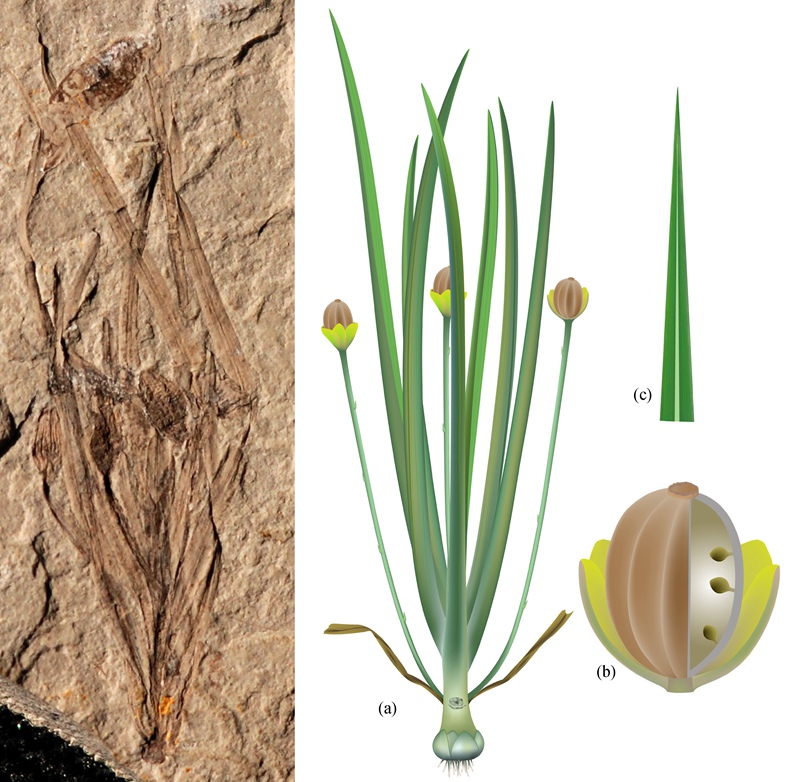
Holotype and reconstruction of Juraherba bodae
Left: the holotype. Right: a, the whole plant; b, fructification; c, distal portion of a leaf
In contrast to woody habit with secondary growth, truthful herbaceous habit lacking secondary growth is restricted to angiosperms among seed plants. Although angiosperms might have occurred as early as in the Triassic and herbaceous habit theoretically may have been well adopted by pioneer angiosperms, pre-Cretaceous herbs are missing hitherto, leaving the origin of herbs and evolution of herbaceous angiosperms mysterious. In a paper published on Acta Geologica Sinica (English edition), the team led by Professor WANG Xin from Nanjing Institute of Geology and Palaeontology, Chinese Academy of Sciences report Juraherba bodae gen. et sp. nov, a whole plant herbaceous angiosperm, from the Middle Jurassic (>164 Ma) at Daohugou Village, Inner Mongolia, China, a fossil Lagerst?tten that is worldwide famous for various fossil finds. The angiospermous affinity of Juraherba is ensured by its enclosed ovules/seeds. The plant is small but complete, with physically connected hairy root, stem, leaves, and fructifications. The Middle Jurassic age recommends Juraherba as the earliest record of herbaceous seed plants, demanding a refresh look at the evolutionary history of angiosperms.
Related information: Han G, Liu Z-J, Liu X, Mao L, FMB Jacques, Wang X*, 2016, A whole plant herbaceous angiosperm from the Middle Jurassic of China,Acta Geologica Sinica (English edition),90(1):19-29
Download:
